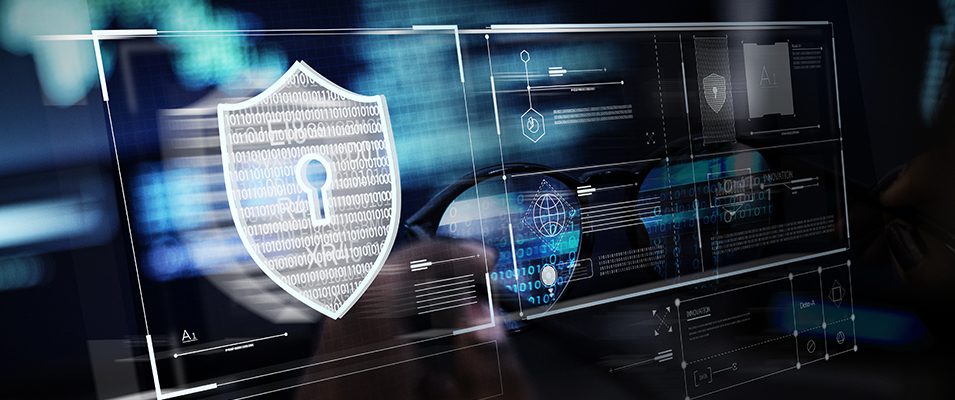
02 Mar Scareware: The blight of small businesses
Understanding Scareware:
Protect Yourself from Deceptive Malware
As businesses increasingly rely on digital tools, cybercriminals continuously evolve their tactics to exploit vulnerabilities from business email fraud to hacking into office copiers. But one of their most insidious methods is scareware, malicious software designed to trick and manipulate users through fear. At Sunwest Bank, we prioritize cybersecurity and want to equip our business clients with the knowledge to effectively identify, prevent, and combat scareware. Understanding this cyber threat and how to mitigate it is essential in safeguarding your business’s digital assets.
What Is Scareware?
Scareware is a type of social engineering malware that plays on the user’s fear. It typically delivers alarming messages to trick individuals into taking action. These messages often pose legitimate warnings about viruses or system errors, urging users to install malicious software disguised as antivirus programs and tools. Scareware manifests in two primary forms: fake antivirus software and ransomware, which target users with misleading and panic-inducing messages.
Fake Antivirus Software: How It Works
The most common scareware scam is fake antivirus software. You may be browsing the internet when a pop-up warns you that your computer is infected with dangerous malware. These messages look official, often mimicking real system alerts or legitimate software. They include language designed to scare you into taking immediate action—typically a call to click on the pop-up to “fix” the problem.
Scareware Pop-ups: The First Red Flag
These pop-ups are the entry point for scareware. They might state, “Your computer is infected. Click here to remove the virus.” This false urgency is engineered to prey on your fear of compromised data. But clicking on the pop-up can download malicious software onto your device, opening the door to further cyber threats and access to your personal information.
What Happens After Installing Fake Antivirus Software?
If you fall for the trick and install the fake software, you inadvertently grant cybercriminals access to your system. The program may continue to display additional fake warnings, prompting you to purchase full versions of the software or provide personal details. Behind the scenes, the scareware malware could be logging your keystrokes, harvesting passwords, or even locking you out of critical files.
Ransomware: The Costly Cyber Threat
Unlike scareware, ransomware doesn’t just trick computer users into installing fake software—it takes direct control of their files or systems. Once infected, the victim’s access is blocked until a ransom is paid. Cybercriminals often demand payment in cryptocurrencies like Bitcoin, making the transactions difficult to trace.
Scareware vs. Ransomware: Understanding the Difference
While scareware and ransomware share similarities, they are distinct threats. Scareware tricks users into installing fake antivirus software, whereas ransomware locks your computer or data, demanding a ransom to restore access. Ransomware is more aggressive than scareware because it directly impacts users’ ability to access their systems or files. Both exploit fear, but the end goal of scareware is to lure users into voluntarily installing malicious programs under the guise of protection. Both are also dangerous, but ransomware can result in immediate and significant financial loss, particularly for businesses.
Scareware Attacks Target Small Businesses
Small and medium-sized businesses are increasingly becoming prime targets for scareware and ransomware attacks. These businesses often lack robust cybersecurity defenses, making them easier targets for cybercriminals. At Sunwest Bank, we understand how crucial it is for small businesses to protect their data, which is why we advocate for strong preventive measures.
The Real Threat: How Scareware Exploits Fear
Scareware capitalizes on one of the most powerful human emotions: fear. Cybercriminals manipulate users into rash actions by triggering panic about security breaches or data loss. Business owners who rely on their computers for operations are particularly vulnerable to these tactics.
The Financial Impact of Scareware on Businesses
For businesses, falling victim to scareware can result in more than just compromised security—it can lead to lost productivity, reputational damage, and financial loss. When employees waste valuable time responding to fake threats or when sensitive data is stolen, the effects can ripple throughout the organization. That’s why understanding how scareware works and how to prevent it is essential for long-term business health.
How to Prevent Scareware Attacks
Preventing scareware from infecting your business requires a combination of vigilance and robust security practices. At Sunwest Bank, we recommend the following measures to keep your systems secure:
Regular Backups and Secure Storage
Ransomware and scareware rely on the fact that most users don’t regularly back up their data. You can recover your files without paying a ransom by making regular backups and storing them securely (either offline or in the cloud).
Use Legitimate Antivirus Software
Always ensure that your business computers are protected by legitimate software from reputable providers. Be wary of pop-ups or messages that prompt you to install new software, especially if you didn’t initiate a virus scan.
Apply Security Patches and Updates
Keeping your operating systems and software up to date is one of the simplest yet most effective ways to prevent scareware attacks. Regularly applying security patches helps close vulnerabilities that cybercriminals could exploit.
Be Cautious with Emails and Links
Malicious email attachments and links are significant sources of scareware and ransomware infections. Only open emails and download attachments from trusted sources. If an email looks suspicious, verify its legitimacy before clicking on anything.
Enable Pop-up Blockers and URL Filters
Scareware often infiltrates through pop-up ads, so it’s essential to enable pop-up blockers in your web browsers. Additionally, using URL filters can help block malicious websites, preventing scareware from being downloaded in the first place.
How to Fix Scareware Infections
If your business falls victim to a scareware attack, swift action can mitigate the damage. Here’s what you can do to regain control:
Disconnect from the Internet
Scareware often relies on an active internet connection to operate. By disconnecting your system from the internet, you can reduce the malware’s ability to communicate with its source, limiting further damage.
Run a Full Antivirus Scan
Run a full scan of your system using legitimate software to identify and remove any scareware programs. Use a trusted program and avoid installing software from pop-ups or unknown sources.
Seek Professional Help
If the scareware has infected critical business systems, or if you’re unsure how to remove it, seek professional cybersecurity assistance fully. At Sunwest Bank, we partner with trusted experts who can help you recover from cyber threats and fortify your systems against future attacks.
The Role of Sunwest Bank in Cybersecurity
At Sunwest Bank, we don’t just provide financial services—we’re committed to ensuring the digital security of our business clients. We understand the critical nature of protecting your company from growing cyber threats like scareware. Our proactive approach to cybersecurity includes providing the tools and resources to prevent attacks and respond effectively if your systems are compromised.
Empowering Businesses Through Cybersecurity Education
Education is key in the fight against scareware and other malicious software. That’s why we continually strive to provide timely, relevant information on cybersecurity threats and best practices for our clients. By staying informed, businesses can be better prepared to identify potential threats and take proactive measures to defend their systems.
Have no Fear with Sunwest Bank as a Partner
Scareware is an evolving threat that preys on the vulnerabilities of both individuals and businesses. By staying informed and implementing best practices, your business can avoid the pitfalls of scareware attacks. Sunwest Bank is committed to protecting our clients through education, proactive security measures, and partnerships with cybersecurity experts. Let us help you stay one step ahead of cybercriminals—because your security is our priority.




